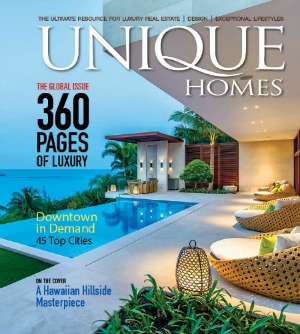Secondhand has gone upscale.
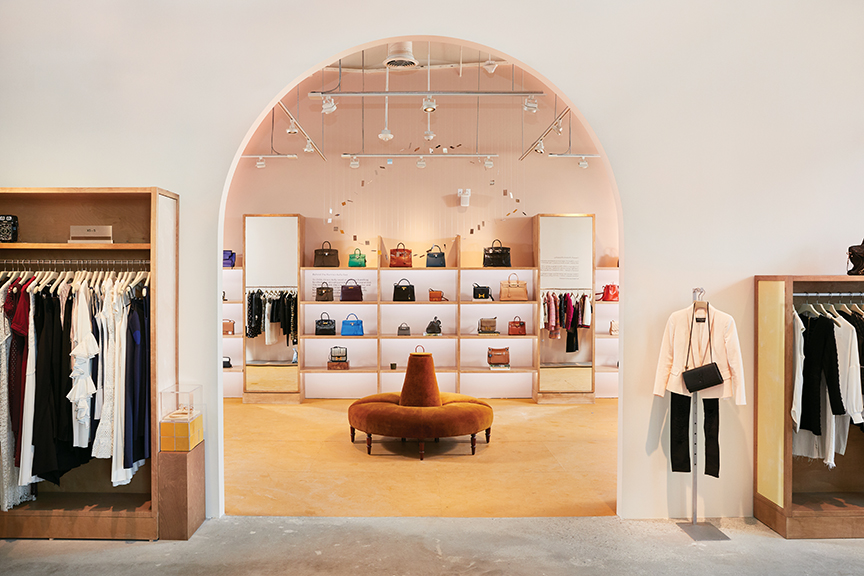
The names tell the story. The Vault Luxury Resale. The RealReal. Poshmark. Once the domain of nonprofits and local mom-and-pop stores, consignment and resale has become a big business, with new ventures adding a high-end twist to a timeworn model.
Resale, in which retailers purchase items directly from consumers and sell them outright, frequently replaces the traditional consignment model. No matter the method — consignment or resale — items are often not new. Still almost everyone in the business would be hard pressed even to utter the word “used,” instead opting for pre-owned, pre-loved, gently worn and secondhand.
“The attitude about resale has changed significantly over the last five years. The new consumer mindset sees the value in purchasing high-quality, well-made items that can last a lifetime, and our model creates access to these items,” says Rati Levesque, chief merchant for The RealReal, which sells luxury goods online (and in two recently opened brick and mortar stores) on consignment. ThredUp, one of the first online companies to focus on second-hand apparel for women and children, estimates 70 percent of their shoppers, which they often call “thrifters,” have never purchased secondhand before.
Used items from premium labels such as Gucci, Hermes, Louis Vuitton and Chanel have always been in demand, often only obtained through a very small group of discrete local shops. In 1991, Sue McCarthy opened a consignment shop in St. Louis, eventually realizing that purchasing items outright was better suited to her upscale clientele. Today, she heads a multimillion-dollar enterprise, trading the original 400-square-foot storefront for a 7,000-square-foot boutique. Her roster of clients extends worldwide with approximately 15,000 individuals who send items to her. Additionally, along with her daughter who is the company curator and verifies authenticity, she frequently travels to view and purchase items from some of the largest closets in New York, Paris, London and other cities, something she calls “shopping the closet.” Clients include some of the world’s wealthiest women and celebrities, and more than a few stylists have her on speed dial. Also, customers travel to St. Louis to shop in her store. For some, like one group of female lawyers, it’s become an annual event.
The RealReal began at Julie Wainwright’s kitchen table and is now a major player in online luxury consignment. Following other online merchants, they recently opened stores in Los Angeles and New York and plan to add more brick and mortar locations in 2019.

Julie Wainwright

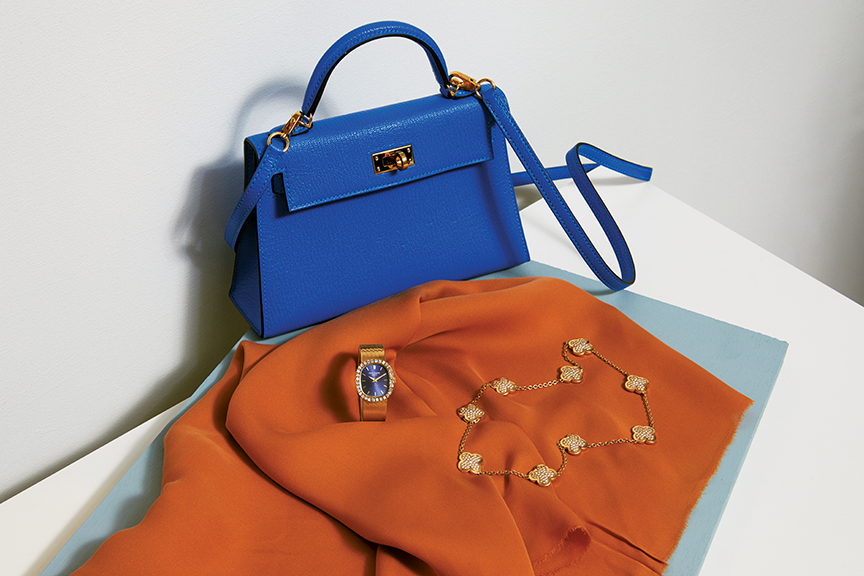
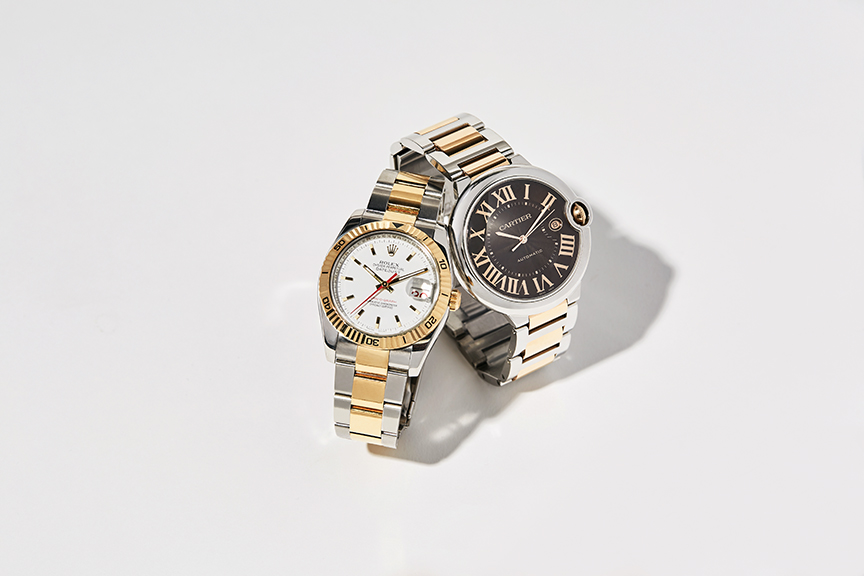
Photos courtesy of The RealReal.
When it comes to selling secondhand items online, eBay was a game changer and 1st Dibbs broke new ground for luxury sales online. In the industry, ThredUp, which started with a pilot for peer-to-peer online sharing of men’s shirts, established the resale niche online. Now the company claims to be the world’s largest online marketplace to buy and sell women’s and kids’ secondhand clothes.
James Reinhart, co-founder and CEO of ThredUp says, “There is a powerful transformation of the modern closet happening and I’m proud that resale is a key driver of this transformation.” ThredUp estimates current resale market for apparel at $20 billion and projects the market to grow to $41 billion by 2022. Investors have taken notice. ThredUp, The RealReal, Poshmark and others have captured venture capital. Waiting in the wings as further resale disruptors, according to ThredUp, are depop, Rebagg, Tradesy and Grailed. Additionally, startups such as The Luxury Closet are tapping into a nascent resale market in Dubai.
ThredUp estimates approximately 13 percent of their most active thrifters are millionaires. Several years ago, McCarthy tried an online store but decided a focus on social media would make the best use of their online staff. They have a massive following on Instagram and Facebook, running special sales and events weekly. “We cast a wide net over every product,” McCarthy says. “Once we put an item up it sells almost instantly.”
The industry claims resale benefits the environment and most major players support a charity. But McCarthy believes her process allows wealthy clients to amp up their support of nonprofits. “We’re able to monetize it better for charities,” McCarthy says. Instead of receiving a check or cash for their items, many of their wealthy clients opt to donate the money to charity. “If they give the $2,000 purse to charity, the charity is going to sell it for $200. If they give it to us, we’re going to pay them a thousand dollars. We make the check out to their favorite charity,” she explains. But many opt to take the resale funds and use them to purchase the latest and greatest, underscoring the secret to resale. “The lady who wants the latest Chanel or Gucci bag is going to be the same lady that wants the next latest one. And that gives her a good incentive to sell the previous bags,” McCarthy explains.


Sue McCarthy
Sue McCarthy pioneered the luxury resale model with The Vault Luxury. Stylists and fashionistas have her on speed dial. And she is called on to shop the most indulgent closets in New York, London and Paris.

Photos courtesy of The Vault Luxury Resale.
By Samantha Myers
Ten years ago, closet design didn’t exist the way it does today. “When I started the company in 2007, I didn’t know another luxury closet designer,” says Lisa Adams of LA Closet Design. “There were always closet cabinet companies, but what has changed is the design aspect. People are starting to see the value in the design and the potential of creating these amazing closet spaces.”
Closets are no longer simply spaces to hold clothing and items, but are becoming as luxurious as the products they store. “The designs are getting elevated,” says Emily Giebel, design consultant for California Closets. “Customers are looking for more items than are typically in a custom builder closet, and the trends are being pushed by things they see on Pinterest. If they value their closet, they don’t want to do wire racks, they want to make the closet something they can walk into and say it’s great.” Giebel added that she has sold more closets for over $18,000 in the last two years than in the previous five.
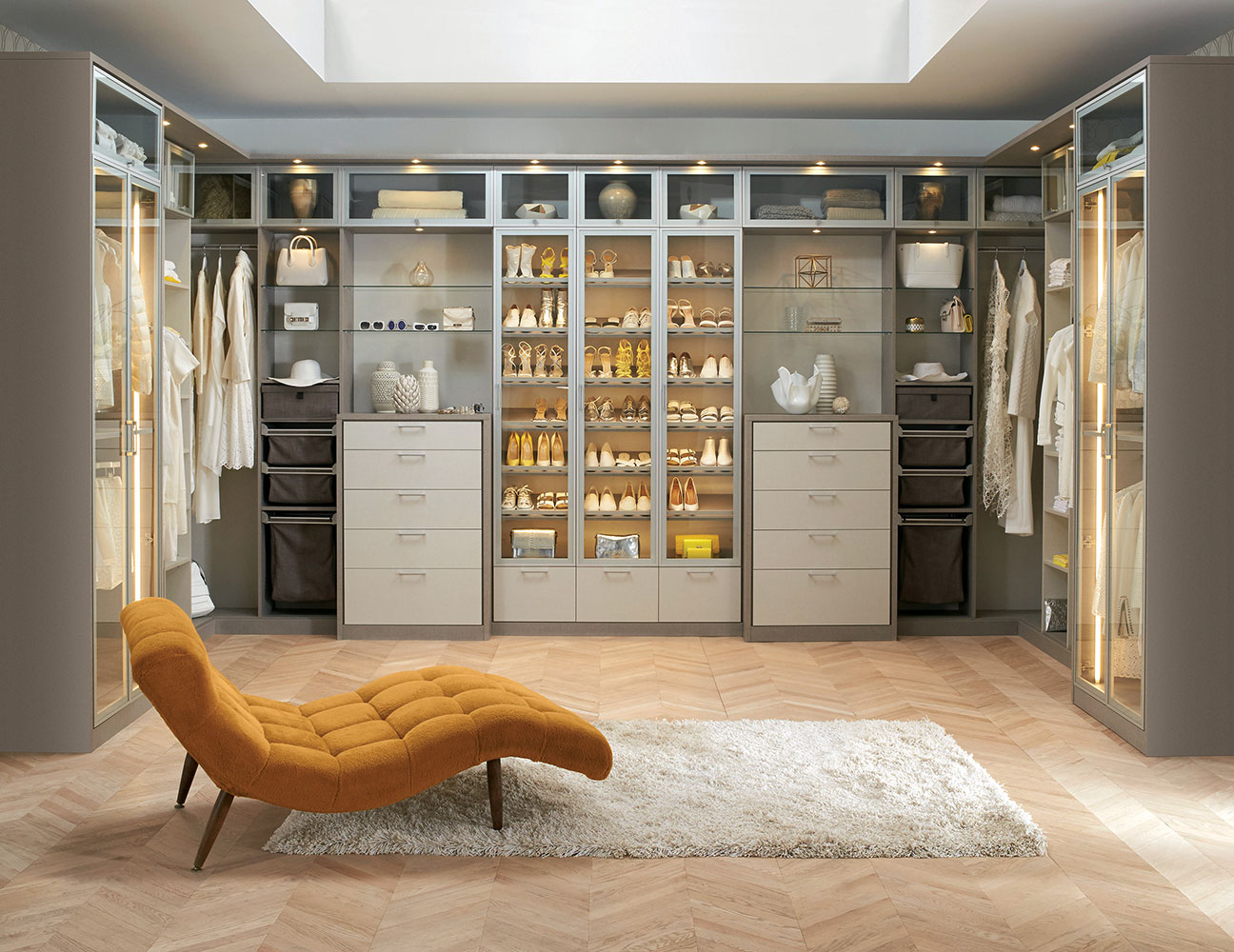
The price range for a luxury closet is typically $10,000 to $50,000, but can go up to $500,000. Adams recalls one of the most grandiose closets she designed — a three-story closet in Bel Air, Los Angeles. “It was spectacular in its materials and finishing, details and accessories. Imagine gold leaf cabinet details, a spiral staircase, biometrics, a jewelry room, cosmetics refrigerator, a panic room,” Adams says. Giebel recently finished a well-appointed closet with leather countertops. “They were purely for an aesthetic purpose; there’s nothing practical about a leather countertop,” she joked.
While extravagant features obviously appear in the higher price range, one of the biggest trends sweeping closets across-the-board is a display-orientated design, inspired by luxury retail boutiques. “Display is functional,” Adams says. “If you see it, then you’re more likely to wear it, to use it. In all the closets that I design, my motto is to be able to see everything in a single glance.”
Boutique-style closet design has employed glass as a means of achieving both display and storage, and is becoming a resounding trend. Another trend is custom lighting, as well as lighting in hanging rods, a technological detail that has been growing in the last few years. “Ten years ago, we didn’t have all those options. We didn’t have glass doors, glass drawers, high-gloss, all that stuff throughout the home that is now being offered in a closet,” Giebel explains. “A lot of the trends are coming from the furniture industry, and we have vendors giving us access to these things.” Up-to-date with interior design trends, closets are adopting a transitional look, leaving behind the traditional style that was popular in the past. “I’ve seen a trend in mixing materials and textures. Blush, brass and marble are hot right now,” Adams adds.
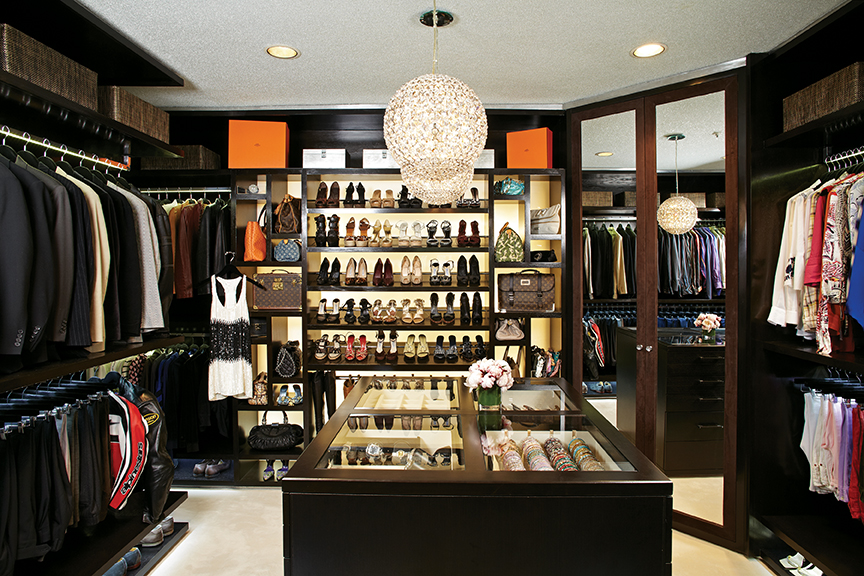
Because closets are receiving more attention on the back end from vendors and distributers, they are becoming focal points for homeowners, comparable to the conventional rooms in a house. “I’m seeing people take rooms over and make them into closets,” Giebel says. “And when additions are done to the home, they are putting more thought into the master walk-in.”
These architectural and design developments suggest that closets are becoming the new “room” in the house, some fit with center islands, couches, vanities and televisions. “People are converting spare rooms to dressing rooms, and I even have projects now where we are converting a living room and dining room into dressing rooms. It’s the feel-good room in the house!” Adams says.
When it comes down to the basics, there are a few things that Adams thinks every walk-in needs. “Every luxury closet should have matching hangers, high-quality functional hardware, a nice finish or lacquer, organized drawers with partitions, base and ceiling molding, and cabinetry that goes to the ceiling,” Adams says. “Similar to a luxury car, you would expect high-quality detailing and a nice paint finish.” Giebel finds importance in mirror options, especially full-length mirrors and decorative molding.
“What I love about my job is to see how something that is in my mind so economical, change somebody so easily by giving you more storage, or making you put things in a certain place so you know where to find them,” says Giebel. “It’s something that’s so simple that they don’t even think about, but it’s transformative. It makes peoples’ lives less chaotic in the mornings, more simple when they are getting dressed.” And for Adams, “I love closets because they are intimate spaces that blend function, art, design and fashion all together.”


